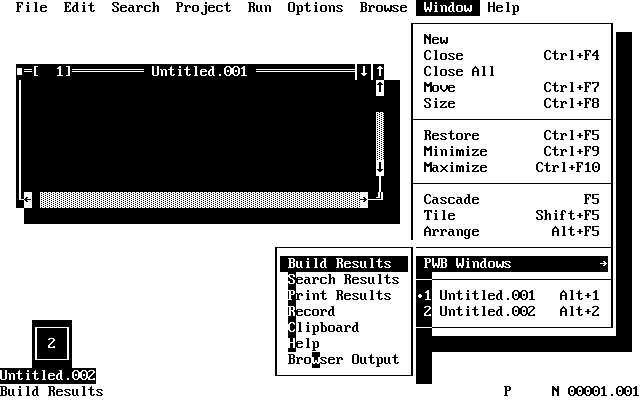 An editor for writing and revising programs
An editor for writing and revising programsIf this is the first time you have used PWB, you see the menu bar, the status bar, and an empty desktop. If you have used PWB before, it opens the file you last worked with.
PWB uses a windowed environment to present information, get information from you, and allow you to edit programs. The environment has the following components:
 An editor for writing and revising programs
An editor for writing and revising programs
 A “build engine”—the part of PWB that helps you compile, link, and execute your programs from within the environment
A “build engine”—the part of PWB that helps you compile, link, and execute your programs from within the environment
 A source-code browser
A source-code browser
 Commands for program execution and debugging
Commands for program execution and debugging
 The Microsoft Advisor Help system
The Microsoft Advisor Help system
The browser and the Help system are dynamically loaded extensions to the PWB platform. Microsoft languages and the utilities are also supported in PWB by extensions. Other extensions are available, such as the Microsoft Source Profiler. PWB presents all of these components through menus and dialog boxes.
Before continuing, look at the following figure, which introduces some terms used to describe parts of the PWB interface.

Chapter 4, “User Interface Details,” contains a thorough description of these elements and the rest of the PWB environment. Refer to this chapter when you need specific information about an unfamiliar interface element.